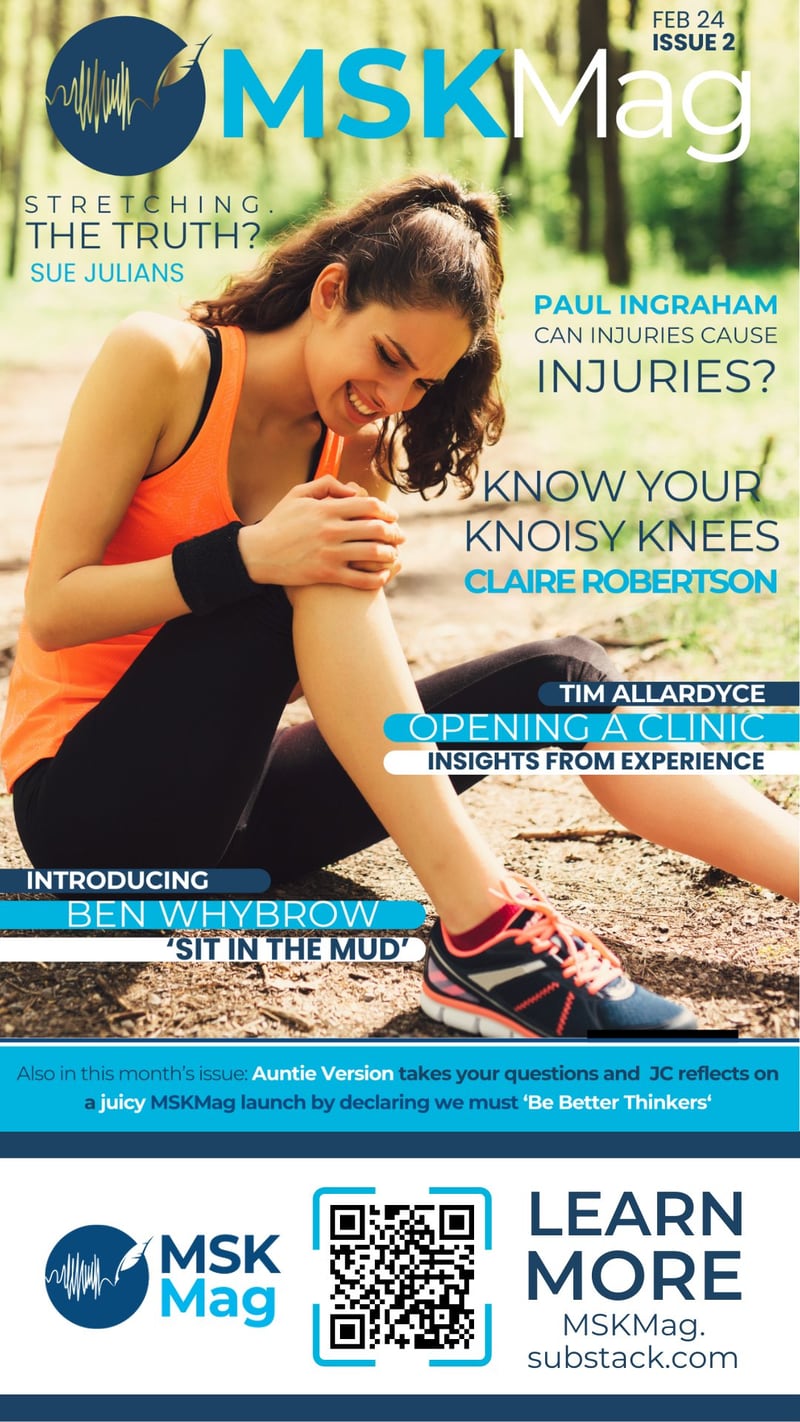Injuries causing injuries causing injuries?
Subtle, sneaky, and speculative causal links fascinate people. Even if there isn’t the slightest thing we can do about them, we seem to take an almost perverse pleasure in sussing out the ultimate causes of our suffering — and the harder the sussing, the better! Both clinicians and patients like to explore exotic causal links that cleverly, speculatively connect the dots between injuries separated by a lot of time and anatomy — like blaming a shoulder pain in 2023 on a knee injury from back in 2005.
And it can get a bit ridiculous, and the most interesting links are often the silliest of all. And these explanations for pain are often used to dubiously justify and sell treatments.
I’ve written a new article about this: “The Phantom Of Complex Compensatory Injuries: Injuries causing injuries... causing injuries?.”
But this article isn’t on PainScience.com. It’s in a posh and magazine-y new newsletter, MSKMag, published by Physio Matters — a UK company that’s like what PainScience.com might have become if I’d decided to Get Serious and hire a team, and focus on content for pros only, instead of doing my quirky indie thing.

Physio Matters is letting me splash around in their pool with an article for their second edition of MSKMag. Physical therapists are the main audience, but any “experienced” patient should find it interesting too. The article is paywalled, but there’s a substantial free intro (about a third of the whole thing), and here’s just a little more from beyond the paywall (oooh, cheating):
What people wonder about is the possibility of a subtle-yet-corrosive force, something that they were barely even aware of, leading eventually to a surprising failure. This is the “slow loading” hypothesis. To make sense, the allegedly stressful adaptations have to be stressful enough to be a problem, to cause enough wear and tear to eventually lead to tissue overload and new injuries … but not stressful enough to be obvious along the way! If it was obvious, no expert insight would even be required.
Compensatory injuries are always a story about causality: they link two injuries with a hypothesis. But causality is one of the hardest things to establish in the life sciences, because of the riot of variables and confounders: difficult research is needed to prove causes, and it has hardly ever been done for anything in musculoskeletal and sports medicine. Even seemingly obvious causal relationships often turn out to be wrong! There’s not even strong cross-sectional evidence (just identifying correlations) for major risk factors for common overuse injuries like IT band syndrome or tennis elbow. That is, we cannot even clearly establish that biomechanical abnormalities, gait quirks, or posture are correlated with injuries and pain problems, let alone that they cause them.
And just by coincidence, I shared [Facebook] a highly relevant example just last week, a popular item. It’s so relevant that I have to wedge it into this post…
New science: Being a bit wonky does not mean you’re prone to get hurt
This new paper from Malisoux et al found no link between gait asymmetry and running injuries. Nada, zip, zero! The highlights (literally)…

Well, that reinforces my bias. I’d love to see a much longer term study to reinforce it even more, the longer the better, a couple years at least, but ideally more like ten. Because, of course, the inevitable objection to this kind of data is that the bad biomechanics will eventually cause trouble — it’s just a matter of time and accumulated load. There are some good rebuttals to that argument, but nothing simple, just a lot of clues and indirect evidence, so more and better direct evidence would be really helpful.
Still even if we had a twenty year study, I can hear the goal posts being moved from here: “It could take thirty years for that kind of trouble to show up!”
Maybe. But probably not. Read the MskMAG article for more!